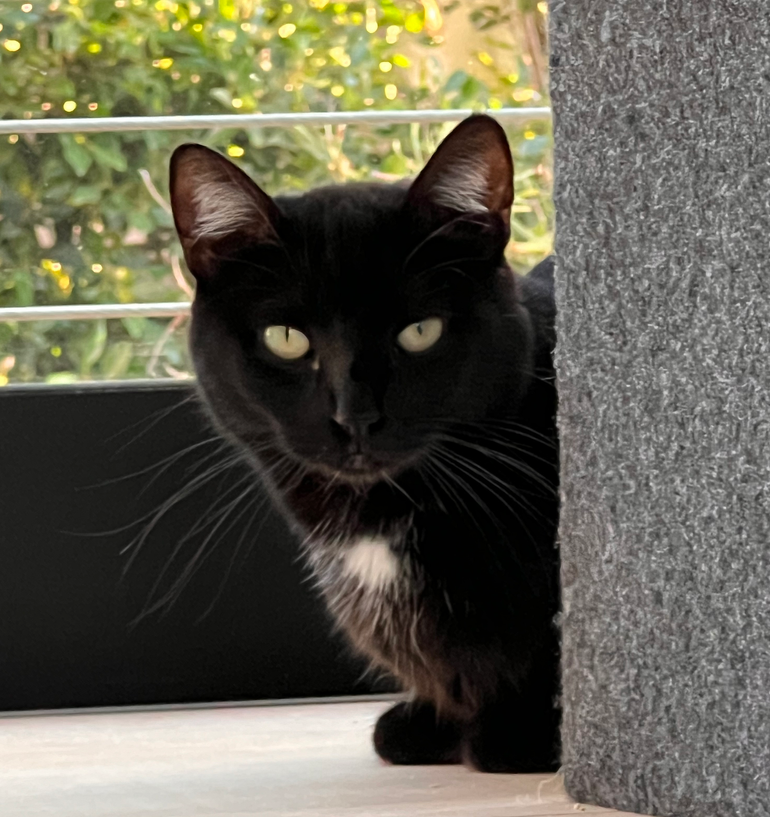My partner and I decided to adopt a kitten. We started looking casually on adoption sites and filled out the requisite paperwork, but we were in no hurry. Then a friend reached out to us. She’d just rescued an emaciated black mama kitty and her four newborns from a construction site nearby. She was housing them in her laundry room. Three of the babies were black like the mama, and one was a soft gray.
When we met them, they fit into the palm of our hands and toddled unsteadily on new legs. We were drawn to the gray kitty right away, but they were all irresistible, of course. As they grew, we discovered that there were two girls and two boys, and that mama kitty was quite young, probably only six months old. It was likely her first heat. Every few days, we’d sit with them and play with them, learning their personalities. The gray kitty was fierce and adventuresome. The black girl was a snuggler. We were torn between the two. During our visits, we also tried to engage the mama. She was so small and so scared and so unused to humans, that she did little more than cower in the corner and hiss if we got too close. We discovered that if we entered the room slowly, got down onto the floor and scooted toward her, she protested less. We brought her salmon and tried to get her to eat from our hands. Eventually, we were able to touch her and pet her, though always under duress. The room was small and there was nowhere to hide, so she was probably only tolerating us because of the environment and because of her babies.
By the time the babies had weaned, we had fallen in love with the girls and decided to adopt them both. Another couple adopted the boys. But no one was interested in mama, and adoption centers weren’t willing to take her either. So the plan was to spay her and return her to where she was found. The reality, though, is that indoor cats can live, on average, up to 18 years, sometimes more. A cat on the streets survives only two or three years. As animal people, we couldn’t bear the thought of her having to be a street fighter, so we decided to adopt her, too, in the hope that we might be able to win her over. We named her Raven.
Raven didn’t feel the same way about us that we felt about her. She didn’t eat for the first few days. She hid under the blankets covering a chair for months, coming out only when we weren’t around and scooting back under in our presence. We longed to understand what we could do to reach her. Cats, however, have a very small window when they are open to human touch. If they haven’t had any by the time they’re a few months old, the window closes rapidly. As I watched Raven open and close, she brought up questions about behaviors I observe in humans. Questions of nature vs. nurture. Questions about the power of fear. I know that depending on our early formative years, some of us are slow to open. Trust takes time and consistency. Childhood imprints can follow us our entire lives. We can be limited by fear even when there’s nothing to be afraid of.
I decided to adopt some leadership skills in my approach with Raven. Despite talking with people, reading about feral and unsocialized cats, and watching videos of what other people have done, I know that there’s no right answer; one size does not fit all. I would need to meet Raven where she is, to celebrate small progresses, and to not take her behavior personally. I also know that progress looks different for everyone, so it was important for me to adapt as she did. I watched her closely and created milestones. When she surprised me with new behaviors, I tried to discover what I could do that would cause her to repeat those behaviors.
Sometimes leadership can feel a lot like herding cats! We all have our individual personalities, struggles and goals. By being intentional in our approach to leadership, we have a better chance of success for everyone. If you’re struggling with your own team (or pet), consider adopting these practices.


